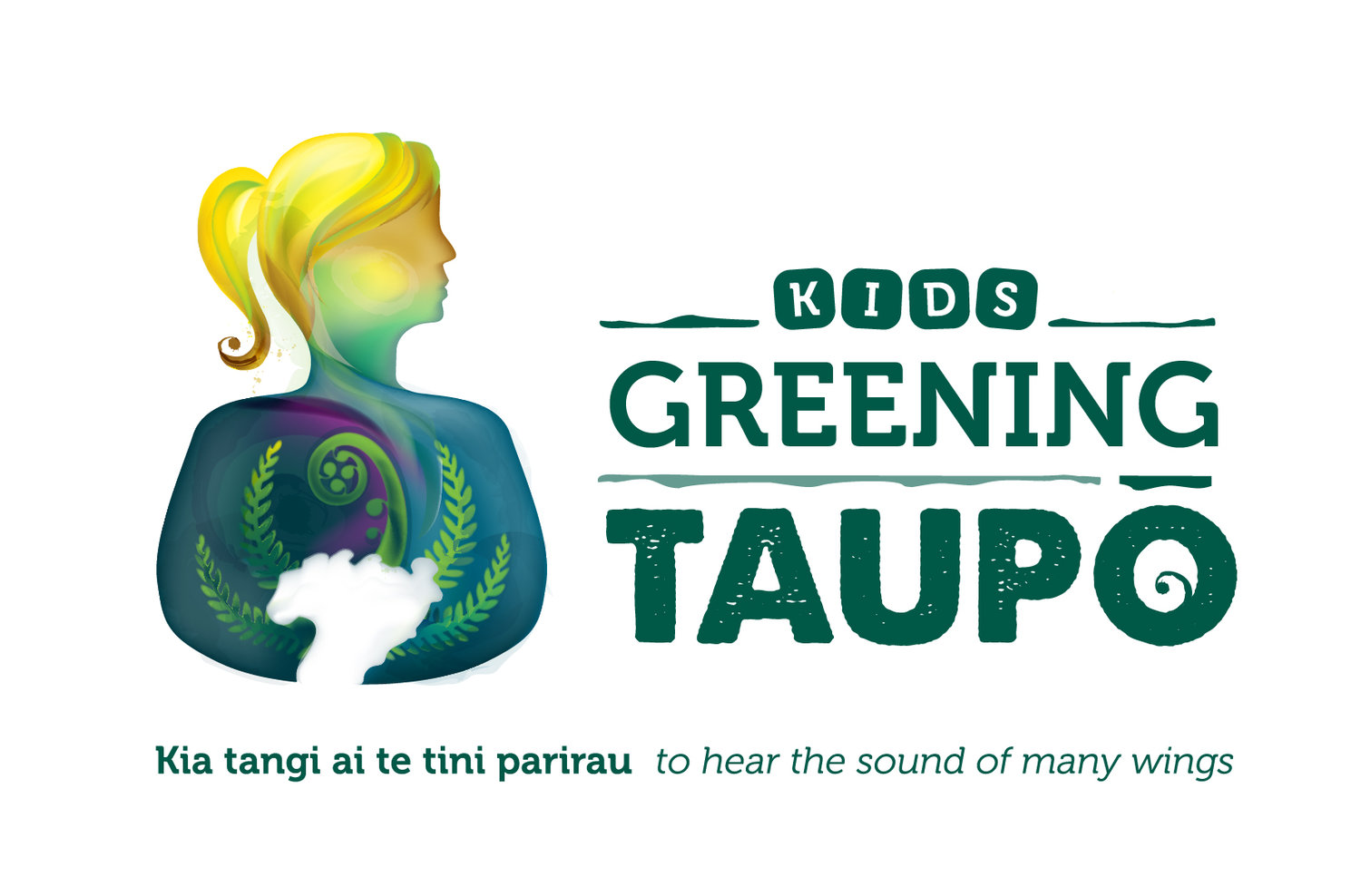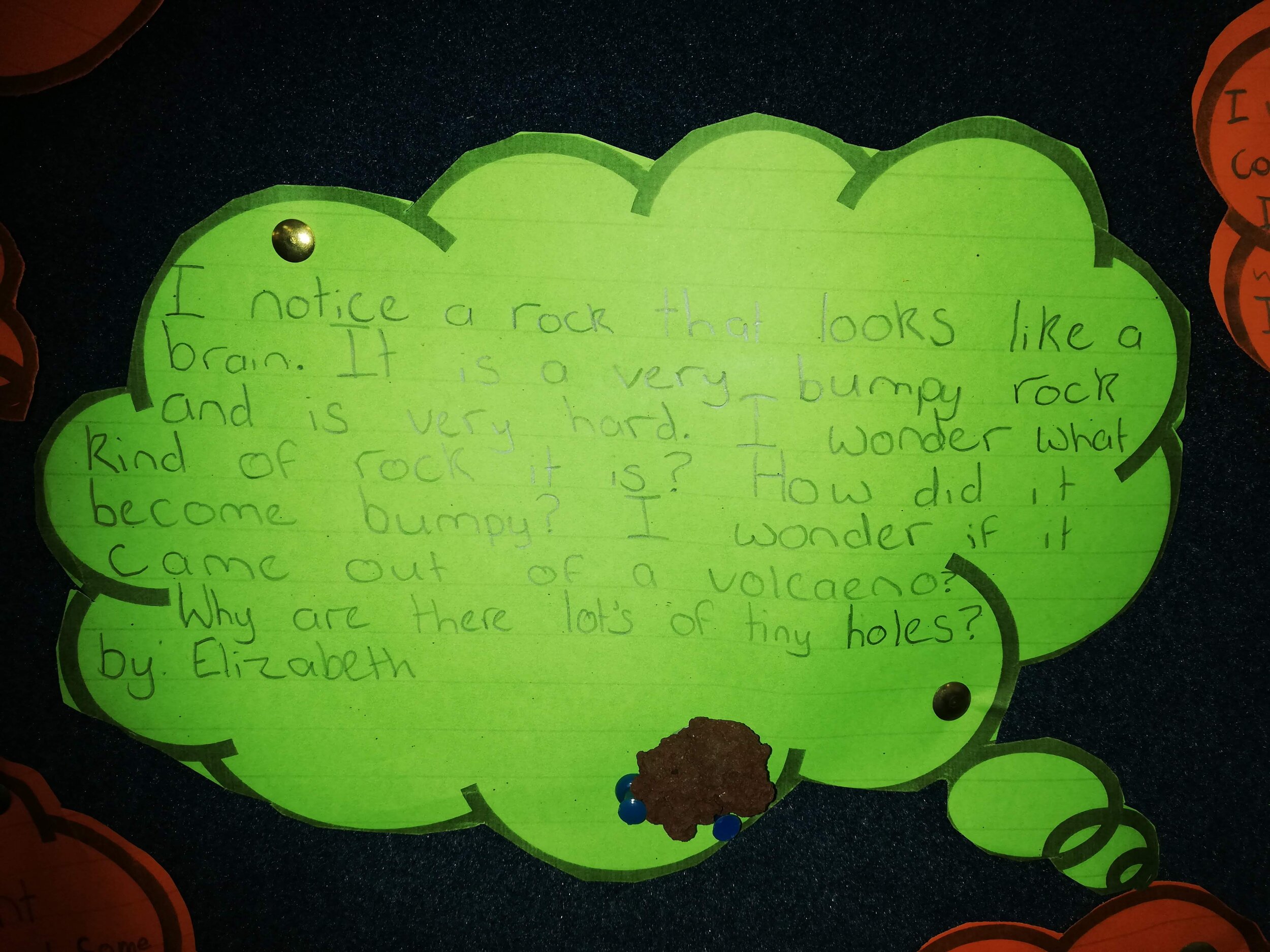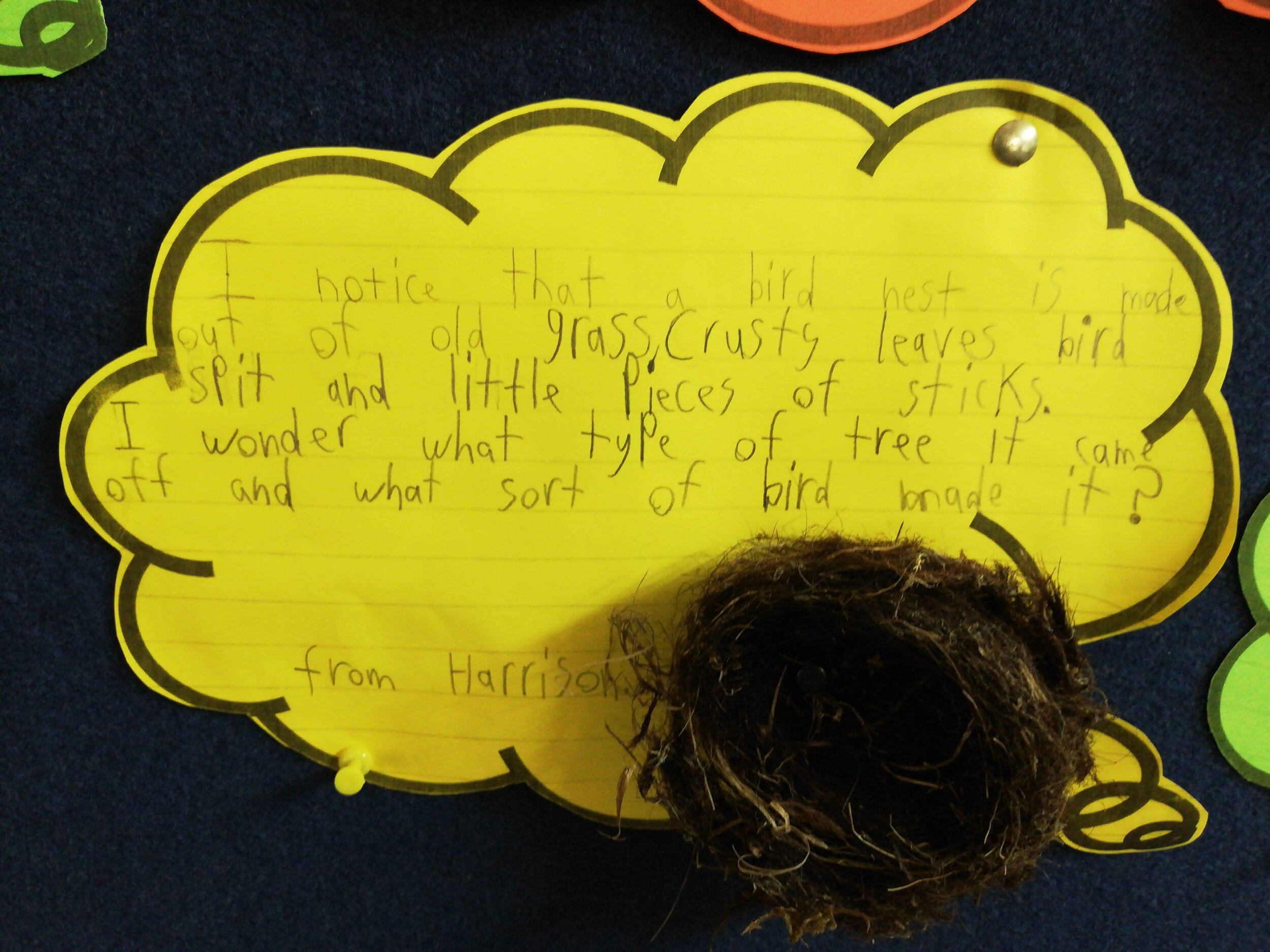Start a Wonder Wall
A wonder wall is a great idea to have above your nature table, or with your nature collection, as they often go hand in hand. Click HERE to learn about making a nature collection or nature table
You can put photos of your natural discoveries up on the wall and write your wonders. Questioning is very important. All scientists ask questions and then strive to find answers. What are you wondering today? Once you’ve written your wonders, go and research! Can you find out the answer?
If you don’t have space for a wonder wall, you could write your wonders in your nature journal. See our nature connector about how to make a nature journal HERE.
Note to teachers, from a teacher:
Fostering curiosity and encouraging questioning is so important. This is a place to do that. Have signs up saying things like, “Good scientists ask lots of questions” and “What are you wondering today?” Have a supply of ‘wonder bubbles’ (thought bubbles) that children can write their wonders on. Allow the children time to research and report back on the things that they are wondering. Your wonder wall might link in with your inquiry topic, it might have a theme, it might be scaffolded, or it might just be a place for free thought and wonders about the world. With new entrant classes I have got the kids to draw their wonders (after reading this book, a discussion about wondering, and modelling some of my own wonders). Then I have written the wonder (that they dictated to me) around the picture. Often I discover themes emerging, so that has lead to our topic/writing work for the next week. For example, one time we had lots of wonders about rainbows and weather, so we made a rainbow with a glass of water and wrote about that, we learnt about thunder/lightning and wrote about that, then we did water cycle experiments and wrote about them. It turned into a whole little integrated unit, all initiated by the students. Another time we had lots of questions about flight, so we delved into that. A wonder wall and nature table at the start of the year can lead to a whole lot of student led inquiry work. What better way is there to cater to students interests, allow students to lead their learning and to learn about the world around them? Give it a go!
Below you can see a read aloud of a great book to start a discussion about wondering.
From Rachel (Kids Greening Taupo Education Coordinator)



